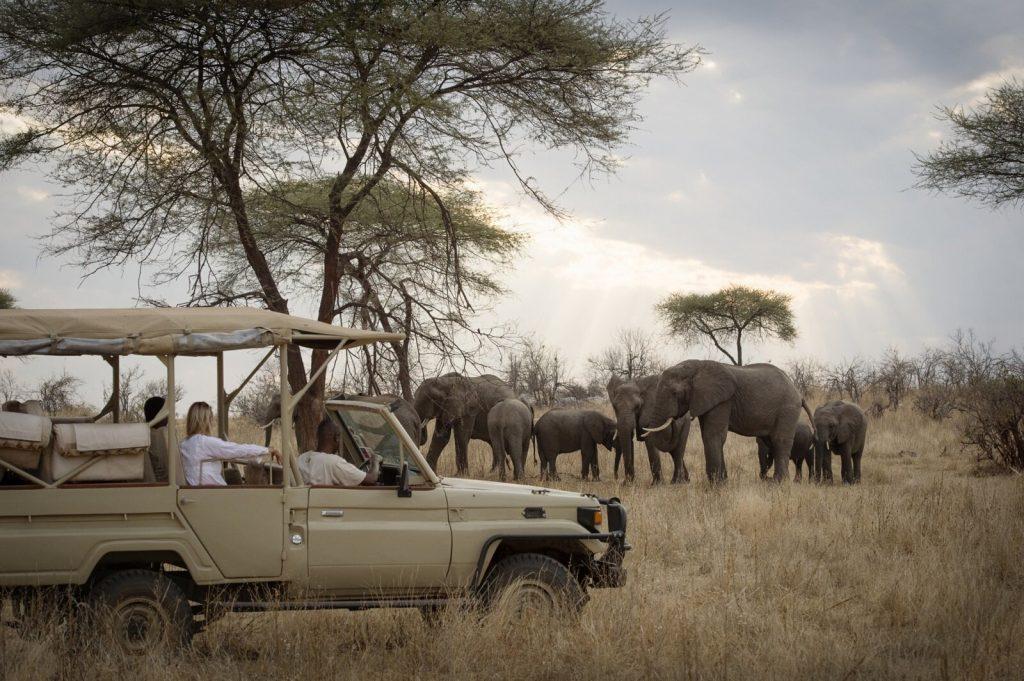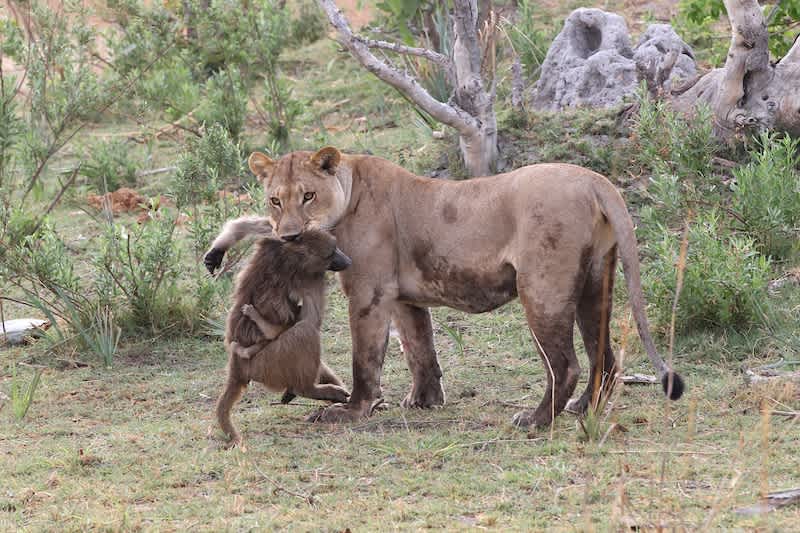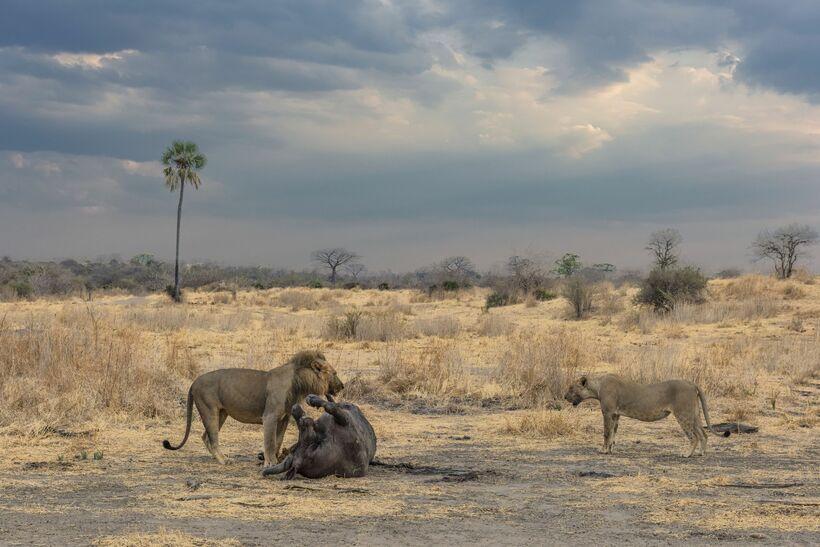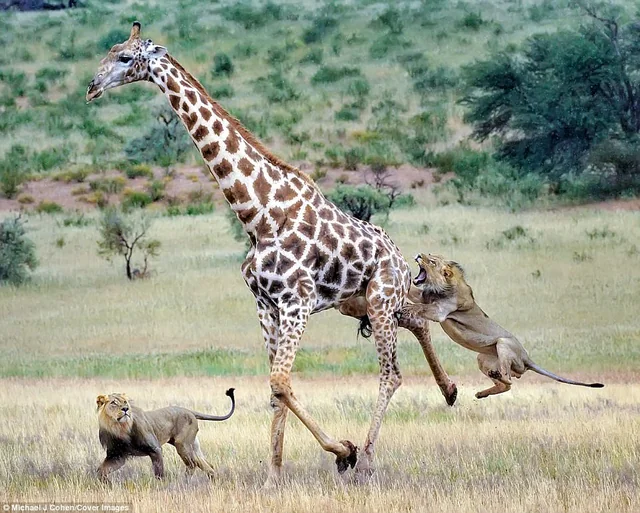Ruaha National Park is one of the largest national parks in Tanzania, found in the Southern Safari Circuit, consisting of other national parks, including Katavi and Kitulo national parks. The southern safari circuit is less famous than its northern counterpart and receives fewer visitors. The infrastructures of this southern circuit are more rudimentary, and less promotion and investment have been initiated in this circuit. This circuit lacks promotion and investment, but it does not lack outstanding unique attractions and strange unusual behaviors from its residents.
This analysis will explore Ruaha National Park, one of the parks forming the Southern Safari Circuit, and unravel the mystery and ancient behaviors of one of its formidable hunters. Ruaha National Park is one of the largest national parks in Tanzania, with over 20,226 square kilometers, and is part of the Rungwe-Kizigo-Mutesi ecosystem, which includes the Rungwe game reserve, Kizigo and Mutesi Game reserve, and the Mbomipa Wildlife Management Area.
Its name is derived from the Great Ruaha River, which flows along its Southern Margin. It is located 130 kilometers west of Iringa and was first gazetted by German colonial rule in 1910 as Saba game reserve and in 1946; the British colonial authorities changed its name to Rungwa game reserve. 1964 the Southern portion was excised, and elevated to full park status. It has been a Lion Conservation unit since 2005. The park experiences a 7-month-long dry season and annual rainfall varying from 500mm in low-lying areas and up to 800mm in Hilly Island Western Insunkaviola.
It has the largest concentration of lions left in Africa, massive herds of buffalo, over 571 bird species, elephants, a low number of zebras, kudu, leopard, hippopotamus, cheetah, Sable antelope, wild dog, spotted hyenas, striped hyenas, Grant’s gazelles and, Impalas and crocodiles. The park is Tanzania’s best-kept secret with its immense size and variety of vegetation, with over 1650 plant species as Southern and Eastern African flora and fauna overlap.
The park can be reached by car on the road from Iringa, and there are two airstrips at Msembe, the park headquarters, and Jongomeru near Jongomeru Ranger Post. This park is home to the lion kingdom of Ruaha with feelings of pride, such as the Glade, Njaa, the drifters, and the Baobab pride. This pride has some of the most unusual and intriguing behaviors waiting to be studied and experienced by visitors from across the globe.
This article intends to highlight mysterious behaviors and awaken and inspire visitors, both locals and foreigners, to take a keen interest and plan a lifetime safari to witness these majestic big cats’ wonders and ancient behaviors. They are drawing inspiration from “The Lions Rule” films of Terra Mater Studios.
Strange ancient alliance
In Ruaha national park, a strange alliance has been around for generations. The Glade prides itself on the banks of the Great Ruaha River. The Glade pride co-exists with baboons in the Glade territory. In a natural world, lions would kill baboons and eat them but not at the Glade. A hungry lion is a dangerous lion. The baboons, though, help the lions feed. The baboons’ generation after generation, have learned the body language of lions. They follow danger and abandon their posts in complete silence when the lions of the Glade are on the hunt. They know what they should do when the lions of the Glade are hunting. Prey in the African wilderness expects baboons to warn them of impending danger, but they help lions track in the Glade.
When prey enters the kill zone under the baboons’ watch, baboons don’t make the lions close in on the Glade of their game, baboons keep quiet, and silence means safety to the game, but this is a false sense of security. Lions stalk their prey while baboons are watching and silent, and lions complete their hunt and eat their game, and there is peace in the Glade.
This alliance is unheard of and strange, the lions of the Glade, for generations t,o laid a golden rule to never touch the baboons, and the baboons’ golden rule is to keep the lions fed. This strange behavior is worth experiencing, and only in Ruaha national park; visitors from across the globe can witness such odd behaviors in the animal kingdom.
The Drifters, the Njaa pride: the Experts of the Buffalo kill
In most African wildlife ecosystems, lions usually live in their territory. Still, the buffalo herd is their territory in Ruaha, the Njaa pride, one of Africa’s ferocious, lean, and ruthless lion pride. They follow the herds wherever the herds go. They don’t care about crossing other pride territories. They live off the buffalo. Due to their large numbers, sometimes they take down two kills at a go to feed their hungry family. The pride has perfected the dark art of buffalo kill.
With the changing rain season cycle throughout the year, buffalo and other prey continuously search for water and pasture. The Njaa pride follow their movement, and following the herds is what the Njaa pride are good at. Visitors who would love to experience the ancient night dance of lions and buffalo in the wild are very much advised to visit this spectacular park. They are guaranteed a treat they can never forget, witnessing the ancient African dance of lions and buffalo soldiers.
Engineers dig the river floor to tap the cleanest drinking water
Elephants have mastered the art of digging river floors with their trunks to tap the cleanest of drinking water, and this knowledge has been passed from one generation to another. Other animals drink water after the elephants have had their fill. Lions of Ruaha have been observed to copy the elephants as they dig river floors to tap drinking water. Lions also search the river floor to tap drinking water using their paws. Another unusual behavior of copying elephants, these also ions are a sight a visitor can never forge; their experience is priceless.
The Art of Killing the Giants
In most African wilderness, with plenty of medium-sized prey like zebras, wildebeest, and other small game, lions hardly hunt giant prey like giraffes, elephants, or buffalo. But due to low numbers of zebras, no wildebeest, and pride having individuals of up to 30 members, lions of Ruaha, the Njaa pride, and Baobab pride have mastered the art of killing giant prey. Giraffes, buffalo, and elephants are the favorite prey for these master hunters.
These lions are not only kings but tyrants of the jungle. They terrorize prey and kill ruthlessly big game due to the vast numbers in their pride. On most nights, the ancient African dance of lions and these giant prey takes place in one of the most magisterial encounters one could experience. With these priceless experiences, visitors from across the globe must visit this magnificent park.
Giraffes in the Ruaha national park appear to moan the Dead
In Ruaha national park, it is common to see giraffes moaning the dead most after their comrade has been killed and eaten by the lions of Ruaha. Giraffes gather around the carcass of their former relative and moan for a while before going on with their usual lives. The sightings of such a phenomenon are unique, and visitors who witness such scenarios carry these fantastic experiences for life. Visitors are welcome to experience this strange behavior in the Ruaha national park.
As Tanzania is trying to create a sustainable multi-billion tourism industry, the Southern Safari Circuit cannot be ignored. Extensive investment and promotion in this part of the country must be on the agenda to market this park.
Even though Ruaha national park is one of the largest national parks in Tanzania, where humans seldom venture into the park, the territory of a lion pride in this park is small, making it possible for visitors to frequently see several feelings of pride in a relatively short time, with abundant prey species and who roam the Great endlessly -Mdonya woodlands and the Mbage-Mwagusi circuit and Ngalambulwa mountain and the gorges and rocky, broken landscapes traversed by the Njombe river.
Being the transition zone between East and Southern Africa, with a broad spectrum of wildlife and plant species of over 1650, this pristine park is an excellent destination ready and waiting to be experienced by visitors. Its uniqueness and strangeness make the park a great place to experience African scenery for visitors from across the globe.
It is high time the government and other tourism and hospitality stakeholders invest hugely in infrastructures and marketing to promote this hidden tourism zone and make the southern safari circuit one of the hottest tourism packages in Tanzania to attract more tourists to experience the strange ancient behaviors of these majestic big cats and giants as the country strives to unlock more tourism opportunities for its people for the welfare of the whole Tanzanian community.
Read more insightful articles here.




